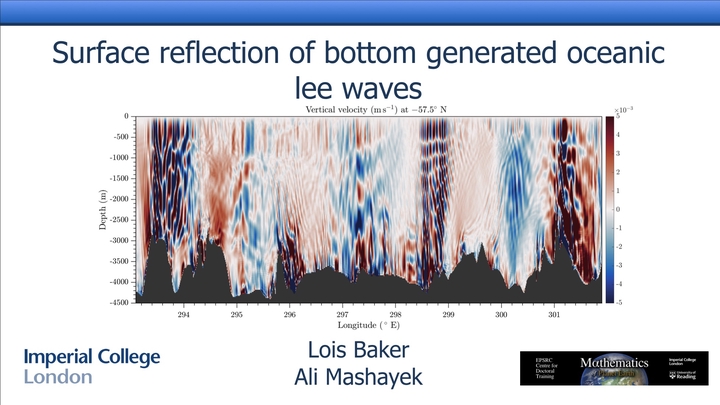Surface reflection of bottom generated oceanic lee waves
 Image credit: Unsplash
Image credit: Unsplash
Abstract
Lee waves generated by stratified flow over rough bottom topography in the ocean extract momentum and energy from the geostrophic flow, causing drag and enhancing turbulence and mixing in the interior ocean when they break. Inviscid linear theory is generally used to predict the generation rate of lee waves, but the location and mechanism of wave breaking leading to eventual dissipation of energy and irreversible mixing are poorly constrained. In this study, a linear model with viscosity, diffusivity, and an upper boundary is used to demonstrate the potential importance of the surface in reflecting lee wave energy back into the interior, making the case for treating lee waves as a full water column process. In the absence of critical levels, it is shown that lee waves can be expected to interact with the upper ocean, resulting in enhanced vertical velocities and dissipation and mixing near the surface. The impact of the typical oceanic conditions of increasing background velocity and stratification with height above bottom are investigated and shown to contribute to enhanced upper ocean vertical velocities.